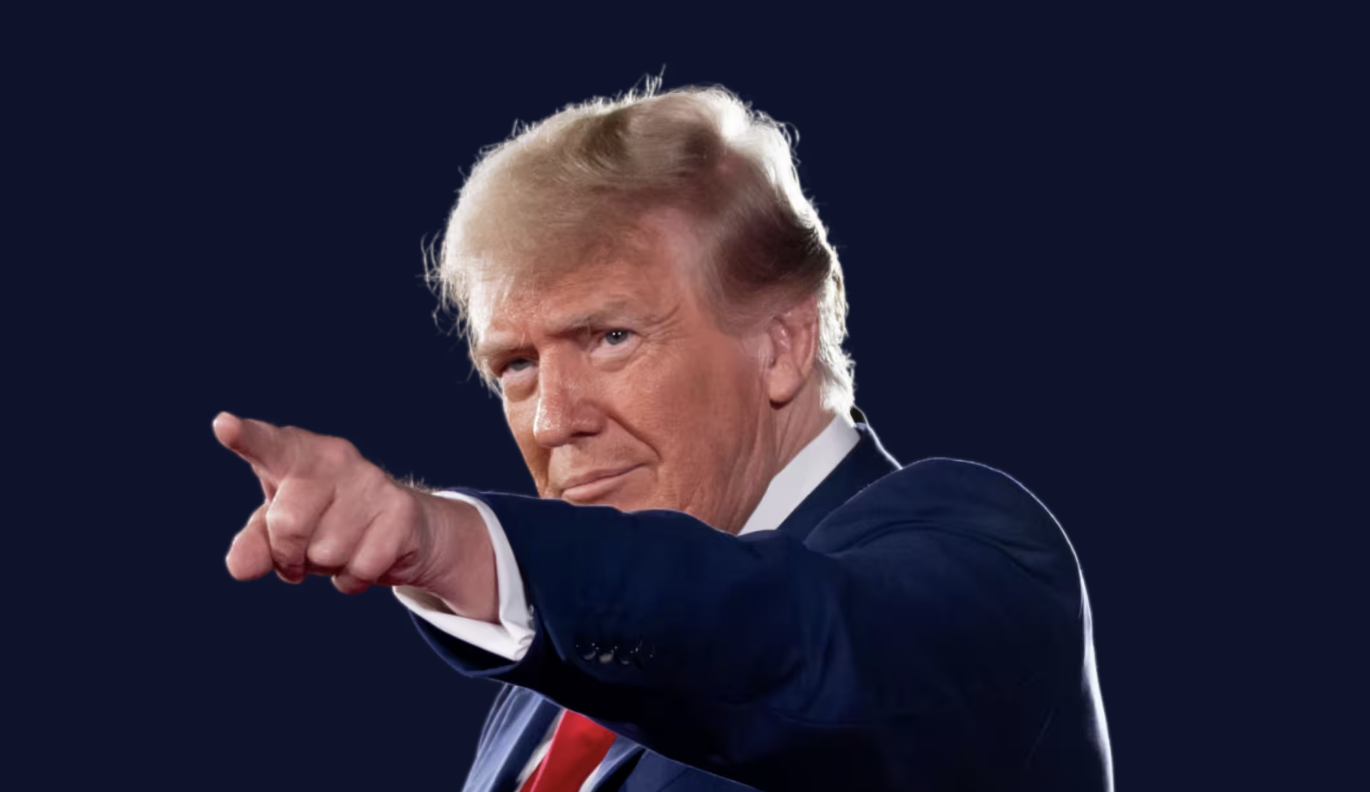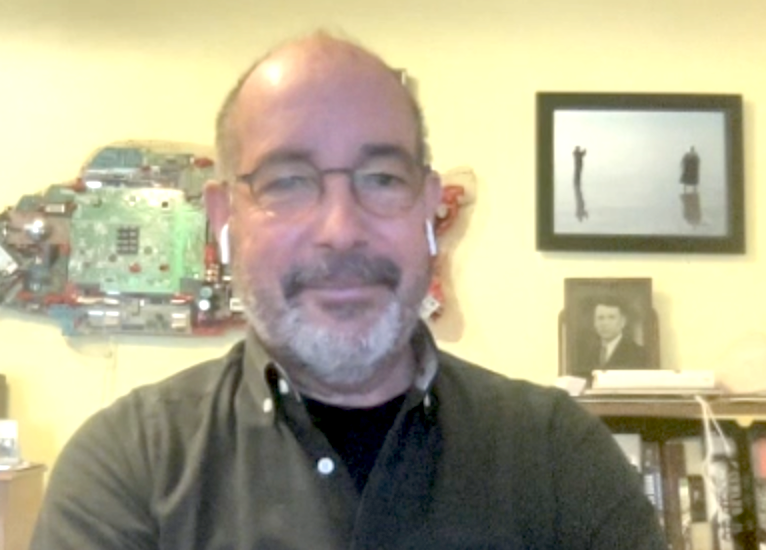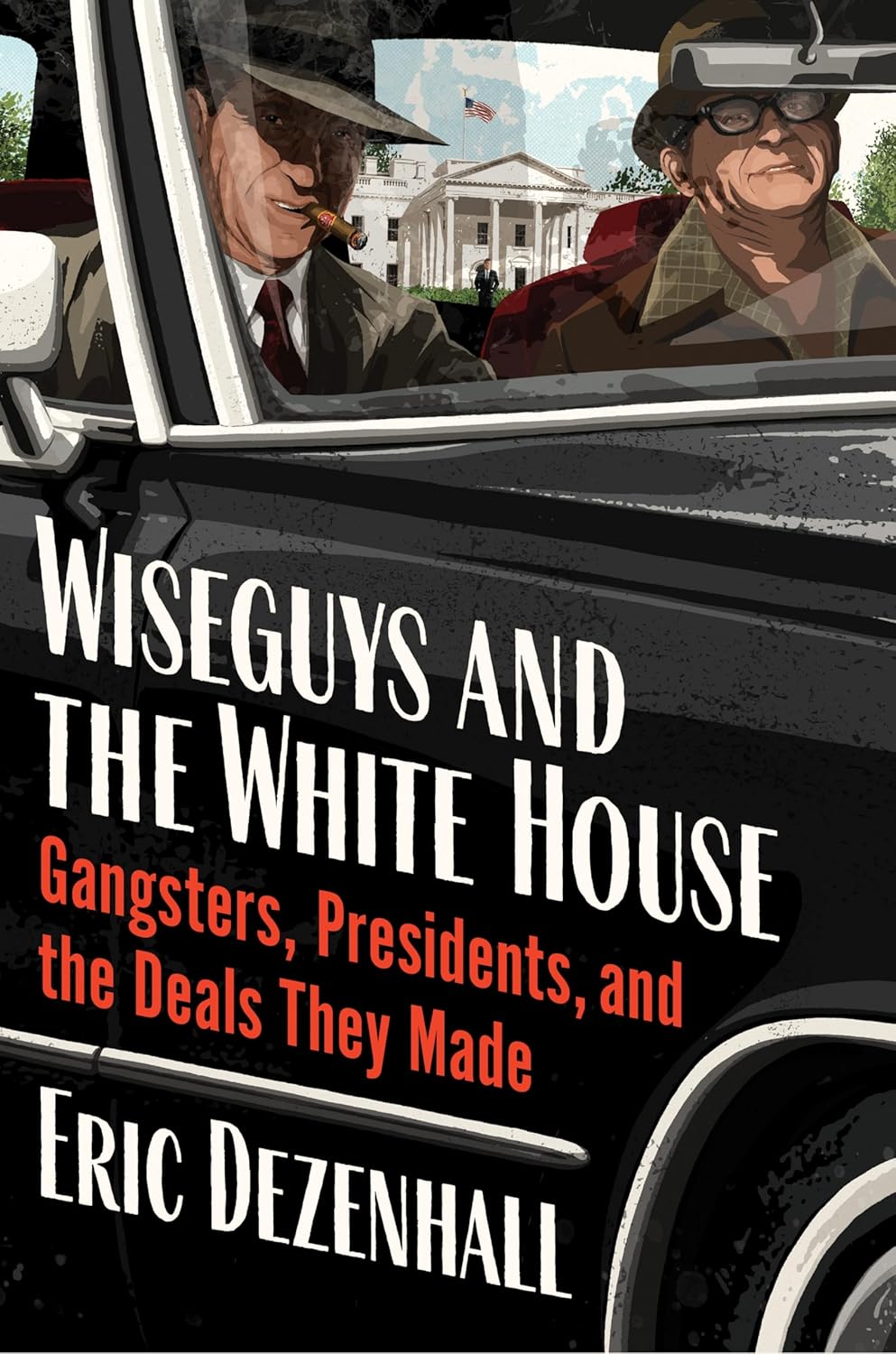A specialist on organized-crime investigations since 1974, best-selling author and independent investigative journalist Dan E. Moldea has published seven nonfiction books including, “The Hoffa Wars: Teamsters, Rebels, Politicians and the Mob.” This excerpt is being published with permission.
CHAPTER ONE
“Forget it, Dan. It’s Chinatown”
By Dan E. Moldea
I didn’t see the minefield ahead.
On April 12, 2002, Anita Busch sent an email, asking me for a favor. She wanted me to collect three articles that Bernard Weinraub of the New York Times had written about one-time Hollywood super-agent Michael Ovitz, two from 1996 and the third from 1999. She provided no explanation, and I didn’t need any. I just did what she asked. Later that day, I sent Anita two of the three articles that she had requested, along with six other stories in which Weinraub had discussed Ovitz. At the time of her email to me, Anita was freelancing for the New York Times. She and Weinraub were in the midst of what would become a seven-part series which began on March 22 about Ovitz and his latest business venture, the Artists Management Group, a broadly based management company for those involved in film and television productions. The two reporters alleged that Ovitz had engaged in financial mismanagement, based on a recent audit of the company’s records.
The final part of their series appeared in the newspaper on May 7.1 The day before that final installation, Anita and Weinraub published a story about Ovitz, “A Faded Hollywood Power Broker Relinquishes His Talent Business,” which seemingly added insult to injury: Even by the turbulent and often cruel standards of Hollywood, Mr. Ovitz’s downfall has been startling. As a founder of the Creative Artists Agency, he emerged as a strong-willed and intimidating figure who sought to inspire fear, and succeeded. But Mr. Ovitz, who is 55, has seen his career fall into a downward spiral since 1997 when he was fired as president of the Walt Disney Company.
Today, Mr. Ovitz reached one of the lowest points in his career. He agreed for a company called The Firm to acquire the major units of his current company, the Artists Management Group. . . . For Mr. Ovitz, the deal is a serious financial and personal blow. 2 In lieu of continuing to freelance for the New York Times and other publications upon the completion of her work on Ovitz, Anita accepted a job on or about May 21, working under contract for the Los Angeles Times. On June 3, her first day with the newspaper, Hollywood legend Lew Wasserman, the retired chairman of MCA, died. As part of her research, she called me to discuss my third book, Dark Victory: Ronald Reagan, MCA, and the Mob, in which Wasserman was a major character. In that 1986 work, I concentrated on MCA, a powerful Hollywood corporation, and its fiftyyear relationship with President Reagan who was in the midst of his second term in office.
During the next two years, I watched the Reagan Justice Department, specifically the U.S. Attorney’s Office in Los Angeles, kill a federal investigation of MCA, as well as another broader probe of the Mafia’s penetration of the motion-picture industry. With life imitating art, these cases were embodiments of the dramatic conclusion of the 1974 film, Chinatown, in which wealthy powerbrokers used their influence with the law-enforcement community to evade responsibility for their roles in major crimes. In fact, one federal prosecutor placed a fine point on this analogy when—after hearing of my frustrations with reporting on the aborted MCA case—he told me, “Forget it, Dan. It’s Chinatown.” The newspaper’s obituary of Wasserman the following day referred to my work.

On June 4, federal prosecutors indicted Julius “Jules” Nasso, along with sixteen reputed members of New York’s Carlo Gambino crime family as part of a major 68-count conspiracy case.
Nasso had been the business partner of motion-picture star Steven Seagal, whose popular action-adventure films included Above the Law, Out for Justice, and Under Siege. In effect, Anita, who usually covered show business, was now investigating the Mafia. Her partner for this investigation was Paul Lieberman, a respected veteran investigative reporter who worked in the New York bureau of the Los Angeles Times. The first Busch-Lieberman story appeared on June 5, stating: Nasso, 49, of Staten Island, was charged with two counts, conspiracy to commit extortion and attempted extortion of a figure in the motion picture industry.
Although prosecutors did not identify the extortion target in the indictment, Nasso’s lawyer said after court that Seagal is the film figure. “It’s definitely Steven Seagal,” said Nasso’s lead attorney, Barry Levin. “Steven Seagal has been seen talking to the grand jury.” Nasso had a 15-year business relationship with Seagal until a bitter falling-out. In March, Nasso filed a $60-million lawsuit against the actor, alleging the star of such films as Under Siege had backed out of a contract to perform in four movies. The two have not spoken in more than a year.”
In her follow-up article the next day, Anita, without the participation of Lieberman, wrote: “The alleged extortion attempt was caught on FBI wiretaps. The wiretaps recorded a conversation between Nasso and Gambino associate Anthony ‘Sonny’ Ciccone in which Ciccone 3 allegedly chastised Nasso for trying to share some of the extorted money with others without ‘prior approval.’”
Anita and Lieberman co-authored a third story on June 12, adding: “The Mafia captain who rules the Staten Island waterfront threatened to kill an entertainment figure, identified previously as actor Steven Seagal, as part of a multimillion-dollar extortion scene. . . . “Anthony ‘Sonny’ Ciccone ‘demanded millions of dollars from this individual and threatened his life,’ Assistant U.S. Atty. Andrew Genser said at a court hearing for the accused Gambino family docks boss.”6 However, Anita did not appear to trust her partner. In her personal notes, she wrote: I am sharing information with the reporter I’m working with, Paul Lieberman. But something doesn’t smell right. Lieberman is too close to these guys, I believe. He’s going out drinking with them.
I tell an editor at the paper this. I told him I don’t feel comfortable telling [Lieberman] things because I believe he’s too close to Nasso and his friends. . . . I decide not to tell Lieberman anything else. Period. In the midst of her research on Seagal and Nasso, Anita called, asking me about mystery man Robert Booth Nichols, a shadowy associate of Seagal’s, who had appeared in the movie Under Siege, and was supposedly connected to mobsters and spooks. Nichols first came to my attention shortly after the tragic death of freelance journalist Danny Casolaro, who was found dead in the bathtub of his room at a motel in Martinsburg, West Virginia, on August 10, 1991.
Police discovered his wrists slashed and a shoe string tied around his neck. They also found a half-full bottle of wine and a broken glass near the tub. After a note from the reporter was found in the room, the local coroner quickly declared Casolaro’s death a suicide. However, his body was embalmed before any notification to his family. This hasty action did nothing but incite legitimate questions about what had really happened to him. During that probe, Nichols’s name surfaced as someone Casolaro had planned to meet.
********************
Even though I believed that Casolaro had committed suicide in the midst of widespread speculation that he was murdered, I was intrigued by his relationship with Nichols, who was both a source and a target for Casolaro’s wide-ranging probe of organized crime, drug trafficking, and money laundering. He wanted to place all of this information in a book that no publisher seemed to want. Overcommitted and underfinanced, as well as way over his head with this investigation, Casolaro had started to call his bottomless-pit investigation, “The Octopus.”7 I told Anita what I knew about Nichols and suggested that she call Richard Stavin of Los Angeles, a trusted friend of mine and a former federal prosecutor who had investigated him.
While working at home in Washington, D.C. during the afternoon of Thursday, June 20, 2002, I received a telephone call from Dave Robb in Los Angeles. Also on the line was Anita. As always, I was happy to hear from either of them and certainly both at the same time. When Dave and Anita, almost in unison, asked me to guess what had just happened, I shouted with considerable glee that they had finally run off to Las Vegas and gotten married. Scoffing at that suggestion and now deadly serious, Dave informed me that Anita had been threatened that morning. Someone had placed an upside-down tin-foil baking tray on the windshield of her 1996 silver Audi convertible. Inside the pan were a dead fish and a rose. Also, taped to the windshield, which appeared to contain a bullet hole, was a hand-lettered sign that simply said, “STOP.”
After discovering the montage on her car, Anita called Dave, as well as the Los Angeles Police Department. Soon after, the local cops arrived at the scene, along with detectives from the LAPD’s Organized Crime Intelligence Division and special agents with the Federal Bureau of Investigation. They were interested in the subject of Anita’s most recent investigation for the newspaper. Hearing then that she suspected Seagal and/or Nasso, along with their alleged Mafia associates, of being behind the threat against her, I suggested that she contact John Connolly, a former New York City police detective-turned-investigative reporter with whom I had been acquainted for several years. Connolly had published stories about Seagal. Dave Robb, whom I had earlier introduced to Connolly, added that the New York reporter’s life had been threatened during his work on Seagal.
In a 1993 article for Spy magazine, Connolly had written: Seagal stands apart from his action-hero brothers. With Seagal, the gap between myth and reality makes the shortcomings of Arnie, Chuck and Sly look like kid stuff. After a six-month-long investigation, Spy has concluded that Seagal is not simply a fraud, a liar, a coward and a bully but also a onetime bigamist who on at least two occasions said he wanted to contract out a murder, who had to settle a nasty sexual-harassment claim and who, not surprisingly, hires and does business with people having ties to organized crime. Along with contacting Connolly, I advised Anita to start a timeline of any and all potentially relevant events leading up to the threat and to continue updating it as the law-enforcement investigation proceeded. I told her to remain calm, adding that the Mafia did not kill honest reporters.
Specifically, I mentioned to her that the murder of reporter Don Bolles of the Arizona Republic in June 1976 was an anomaly, and had never been actually proven to have been a Mafia hit. With regard to my own personal security problems, especially during the research for my first book, The Hoffa Wars, which detailed the rise and fall of Teamsters boss Jimmy Hoffa, I had never been targeted by the Mafia. If I had been, I would already be dead. 5 At first, I did not take the threat against Anita very seriously. A victim of a mere act of vandalism, she was physically unscathed, completely uninjured. Though it seemed to be a real threat, no one had raised a hand to her. I assumed that she would continue her fine reporting about the entertainment industry, and that she would laugh about this incident someday.
On July 11, three weeks after the threat against Anita, the New York Daily News published the first story about it, saying: Reporting can be a risky business. . . . After digging into the [Seagal-Nasso] story for a couple of weeks, Busch recently discovered that someone had come to her L.A. home and smashed her car’s windshield, leaving a note that said, ‘Stop,’ sources tell us. She also found a metal box on the car. Bomb-squad cops found a dead fish in it. While police investigate the incident . . . , Busch has resigned from the story and is in hiding, say sources.
I was particularly surprised to read that Anita had actually left the Seagal-Nasso story in the wake of what I still viewed as an act clearly designed to do nothing more than to frighten her. The following day, July 12, an online publication that featured news about Hollywood repeated the reported threat against Anita, stating that she “hasn’t been to work for close to three weeks.” The writer of this short piece added: “I would be less than candid if I didn’t disclose that certain voices within the small community of industry reporters and observers are reacting to this story with arched eyebrows. Let’s let it go at that . . . for now.” The writer appeared to be implying that some journalists did not believe that Anita had actually been threatened. Dave Robb confirmed to me during a telephone conversation that Anita had left the SeagalNasso story. He did not give me any details, and I didn’t ask for any. With regard to the skepticism of her peers in the Hollywood-reporting community, I was concerned that Anita might have lost the respect of some of her colleagues if they viewed her as a coward because she had abandoned the Seagal-Nasso story and gone into hiding. That aside, even though I did not know Anita very well, I felt confident that she was incapable of concocting the threat scenario.
Essentially, I believed her story because Dave completely trusted her. And that was good enough for me. What I did not realize then was that on the day after the June 20 threat, an alleged con artist under federal indictment for fraud, Dan Patterson, had called Anita repeatedly at her office. When she finally received his messages and called him back, he warned that her life was in danger and that someone was planning to place a bomb in her car. Identifying himself by name, he said that he did not want to see her get hurt. Patterson later told The Smoking Gun: “If someone is gonna hurt a young woman, I’m not gonna sit by and let that happen. I knew it was gonna cause me a problem when I did it. . . . You got to look at yourself in the mirror.”
Patterson had no idea of what had happened the previous day. Considering that federal agents were taking this threat seriously, it was understandable that Anita, who never billed herself as a crime reporter, had left the story and decided to disappear while the investigation proceeded. Paul Lieberman of the Los Angeles Times, Anita’s former partner who was not threatened, stayed with the story and published his first solo-bylined article on July 12 about the relationship between Seagal and Nasso in which he wrote: During a partnership that lasted more than a decade, Seagal starred in films that grossed hundreds of millions of dollars, and Nasso helped produce them. They were close, almost like brothers. Seagal bought the house next to Nasso’s mansion on Staten Island and they often dressed alike, all in black, just in different sizes. Nasso was a foot shorter than the imposing actor. Nasso also was the easy one to deal with. Like many performers, Seagal could be self-centered and moody—“a stubborn, maniacal idiot,” as he once described himself.
But it was hard to find anyone who didn’t like Nasso. “I would go in,” he said, “and clean up the mess.” Yet it was worth it, he insisted. Every minute with Seagal. “I went on the magic carpet ride with him,” Nasso explained. He says that even as the magic carpet ride threatens to land him in prison.
Five days after his story about Seagal and Nasso, Lieberman published another, saying: New York-based Mafia figures pursued their attempted extortion of a “petrified” Steven Seagal in Canada, on the West Coast and in a restaurant here, according to newly filed court papers. In one episode resembling a scene from The Godfather, Seagal’s former producing partner, Julius “Jules” Nasso, startled the action star by switching the location of a meeting “at the last moment” and taking him to the Brooklyn restaurant, where mob captain Anthony “Sonny” Ciccone demanded money from the actor. . . Two weeks later, an FBI bug recorded the mob crew joking about the incident. . . . Julius Nasso’s brother, Vincent, is quoted as quipping, “It was like right out of the movies.”





